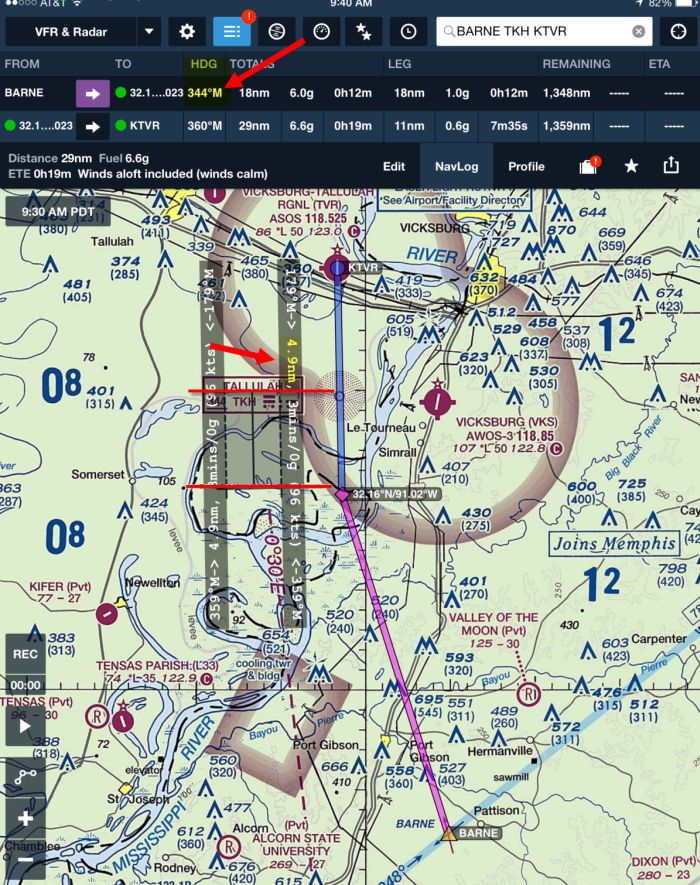Technically, if you can align yourself with the inbound course prior to crossing the fix (i.e. a direct entry), then you have already executed the 'hold' and wouldn't need to go around again.
That said... the feeder also technically takes you straight to the NDB and doesn't provide for a deviation to align yourself with the inbound course. So it may be more expedient to skip the transition in this case altogether.
I’m still wondering about this exact thought (your first paragraph), but I don't think the feeder takes you straight to the NDB. I’m just a lowly student… so feel free to pile on.
According to ForeFlight (see below), if you don’t home in on the NDB, but just fly the IAP’s specified heading of 344 magnetic
from BARNE, you don’t actually arrive at the TKH NDB. Instead, you arrive about 5 nm to the south of the TKH NDB, still at or above 2100. Eventually, you intercept the ILS/localizer and then turn onto the inbound course to the HILPT fix defined by the TKH NDB, and as suggested by the side view, below the glideslope for the ILS.
Thus, I continue to think that while you literally need to do the “hold-in-lieu of procedure turn” (HILPT) because the chart doesn’t say “No PT,” you are in fact doing the required HILPT by already being on the inbound course
before crossing the fix. Thus, the required hold essentially becomes synonymous with continuing straight-in, beginning your descent at the TKH NDB.
Or, is there some reason that you must cross the fix TWICE to legally do the hold?
That doesn’t seem right to me, but I’m a newbie.

 Transition to final approach configuration is assumed to occur during the intermediate segment. None here.
Transition to final approach configuration is assumed to occur during the intermediate segment. None here.